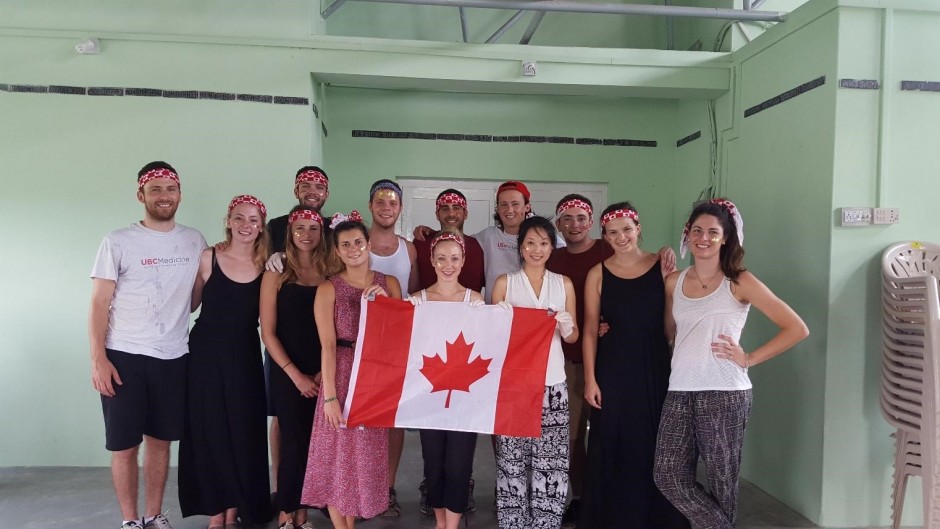By the UBC GHI Nepal Sickle Cell Team

(Front) Miles Marchand, Carolyn Bell, Nina Maerkl, Rose Shumiatcher, Quinn Harris, Clara Hong, Greta Joy, Gabrielle Quinlan
(Back) Tanner Chahley, Michael Gallea, Carson Gill, Noah Marchand (Miles Brother), Brendan Arnold
Situated on the opposite side of the globe, Nepal is a fascinating country full of history, diverse cultures, and spectacular landscapes. This summer, a group of 12 UBC medical students traveled to the western province of Dang in rural Nepal. Partnering with the non-profit organizations, Creating Possibilities Nepal and the Inter-Cultural Women’s Educational Network (IWEN), we connected with local Nepali health professionals and developed a project to screen for Sickle-Cell Disease (SCD). SCD is an inherited hemoglobin disease that is characterized by crescent or ‘sickle’-shaped red blood cells that may block small blood vessels and impair blood flow, preventing oxygen from reaching the body’s organs. Ultimately, this may result in severe pain, organ damage, increased risk of infection, and even death if not managed appropriately.
The purpose of the project was to estimate the prevalence of SCD in the local Tharu community. Together with a team of Nepali health professionals, we drew blood from more than 2900 hundred individuals, performed blood smears, and analyzed the samples using microscopy. Individuals that screened positive for the trait were invited back to receive information and counseling on how to manage their symptoms and plan for their futures. In addition, money we raised will provide equipment and supplies for a local health post in the community and employ a lab technician for an entire year to treat and follow up with those diagnosed with SCD.
Nepal is a very poverty-stricken country and the local people, especially in rural areas, have little access to health services. Thus, managing a condition like SCD is very difficult, if not impossible, for them. Preliminary results estimate the prevalence of the Sickle Cell trait to be 9.3% among the Tharu community. Ultimately, these results will be used to lobby the Nepali government to reinstate previously promised financial support (up to $1,000 US) for those diagnosed with SCD, which would save countless individuals from suffering and improve their quality of life immensely. Moreover, providing local health professionals with the resources to treat and educate patients diagnosed with SCD at rural health posts empowers the communities to manage the disease independently and sustainably.
Moving forward, our team hopes to continue to increase international awareness of SCD and continue in our collaboration with Nepali health professionals and non-profit organizations to develop effective management and prevention programs for SCD.